Herbert Joseph Larkin was born in
Brisbane, Queensland, Australia. His mother, Annie Mary Frances McHugh Larkin, was from Queensland. His father, Herbert Benjamin George Larkin, was from Kent, England.
Herbert was educated at St. Thomas Grammar School in
Melbourne. He became a junior clerk for the Union Steam Ship Company.

Herbert Joseph Larkin
He enlisted in the Signal Troop of the Australian Imperial Force on 19 August 1914. He claimed two years prior experience in the 21st Signal Troop. He designated his next of kin as M. H. Larkin, residing in Saint Kilda, and claimed British citizenship.
The Larkin Aircraft Supply Company (Lasco) was an Australian aircraft manufacturer based at Coode Island in
Melbourne.

Larkin Aircraft Supply Co. (LASCO) Coode Island, Victoria, 1930
Captain Herbert Joseph Larkin DFC was an Australian-born British World War I flying ace credited with 11 confirmed victories. Postwar, he became a pioneering aviator and aircraft manufacturer in Australia
After returning from the First World War Herbert Joseph Larkin, a fighter pilot with the Royal Flying Corps, and his brother Reg Larkin formed an agency for Sopwith aircraft. The company was formed in 1919, as the Larkin-Sopwith Aviation Company of Australia Limited manufacturing aircraft components. The original company went into liquidation and Herbert Larkin then started the Larkin Aircraft Supply Company (known as Lasco) in 1921. In 1925 the company produced the Avro 504K, the company also produced under-licence the de Havilland Gipsy Moth and one de Havilland DH.50 biplane. It also designed and built a number of aircraft including the Lasco Lascoter in 1929, the first all-metal aircraft to be built in Australia. The last design was the three-engined Lascondor. Withdrawal of government subsidy and economic depression caused the company to shut in the 1930s
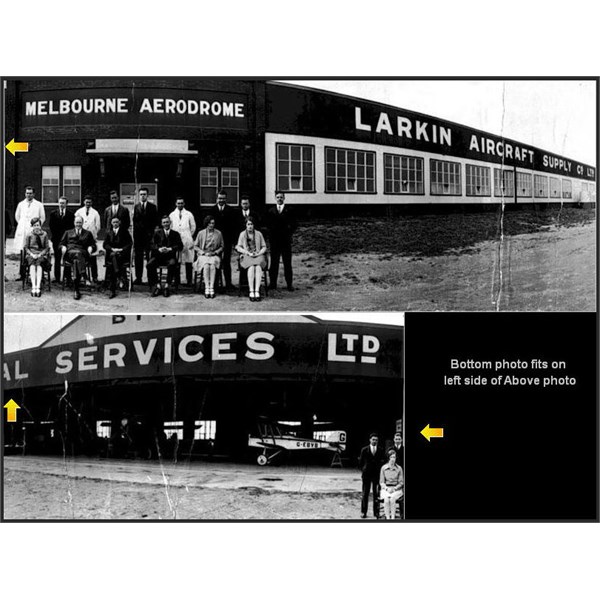
Larkin Aircraft Supply Co.
In December 1921, Larkin won the government's airmail contract for the
Sydney-
Adelaide route. However, his lack of suitable aircraft and sufficient capital led him to partner with Frank L. Roberts in Australian Aerial
Services. Roberts brought the government contract for the
Sydney-
Brisbane route into a partnership with Larkin. The need to form this partnership delayed acceptance of the contract until October 1923. As part of this partnership, Larkin Aircraft Supply Co. flew airmail and passengers over several different routes in Australia between 2 June 1924 and 9 September 1926, connecting
Adelaide,
Sydney,
Broken Hill,
Mildura, and
Hay. However, service on Roberts'
Sydney-
Brisbane route failed.
In 1928, Larkin underbid Qantas for the
Camooweal-
Daly Waters route, which would prove unprofitable.
In February 1930, Larkin founded an unsubsidized company, Murray Valley Aerial
Services. In June, the government subsidies for southern mail
services were withdrawn
The Lasco Lascoter was a 1920s Australian 6-
seat passenger and mail carrier aircraft built by the Larkin Aircraft Supply Company (Lasco) at Coode Island, Victoria. It was the first Australian-designed and built airliner to be granted a Certificate of Airworthiness.
The Lascoter was a high-wing monoplane with a tubular steel structure, featuring a tailwheel undercarriage and a fully enclosed cabin for the passengers and
the pilot. It flew for the first time on 25 May 1929, despite being damaged in a landing accident at Coode Island in May, it received its Certificate of Airworthiness on 22 July 1929. It was then put into service with Australian Aerial
Services, an airline owned by Lasco, and used on an air mail route between
Camooweal, Queensland and
Daly Waters, Northern Territory. The Lascoter was used by Australian Aerial
Services and its successors until being withdrawn from use in 1938, it was scrapped during World War II.
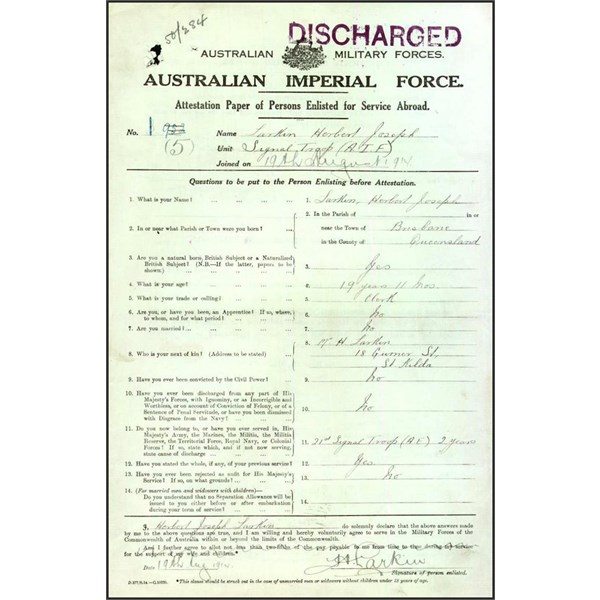
A.I.F Discharge Sheet
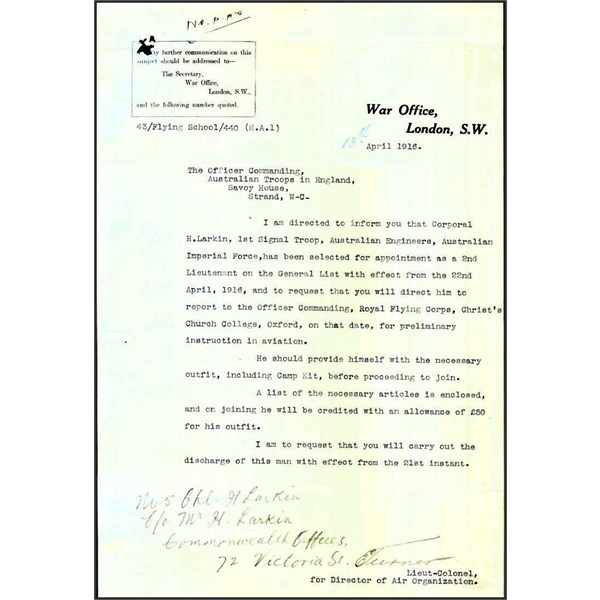
From War Office in London
Following a requirement for a passenger and mail carrier for the Australian company Larkin Aircraft Supply Company Limited an order was placed for a monoplane airliner designed by George H. Handasyde known as the Handasyde H.2. Handasyde having no factory of their own contracted Air Navigation and Engineering to build the aircraft on their behalf. Larkin had decided that the H.2 monoplane could not operate in the heat of Australia, and transferred the contract to supply a new airliner to A.N.E.C. Three ANEC III aircraft were built. The new design was an unequal-span biplane with a Rolls Royce Eagle VIII engine.
The pilot sat in the open above the mail compartment, with space for six passengers or cargo inside the fuselage.
The first aircraft flew at Brooklands on 23 March 1926 with the Australian registration G-AUEZ. All three aircraft were crated and shipped to Australia and were operated by Larkin's operating subsidiary Australian Aerial
Services. The aircraft were named Diamond Bird, Satin Bird and Love Bird. The three aircraft gave sterling service for a number of years and made a number of important flights in the Australian outback. First registered on 21 May 1927, Satin Bird was used by the wealthy sheepowner William Oliver and his party to tour central Australia that same year, stopping at
Oodnadatta,
Alice Springs,
Farina, Maree, Charlotte Waters, and
Simpsons Gap. Satin Bird crashed at
Hay on 27 December 1927 and remained inactive until 1929, when it was officially stricken from the aircraft registry.
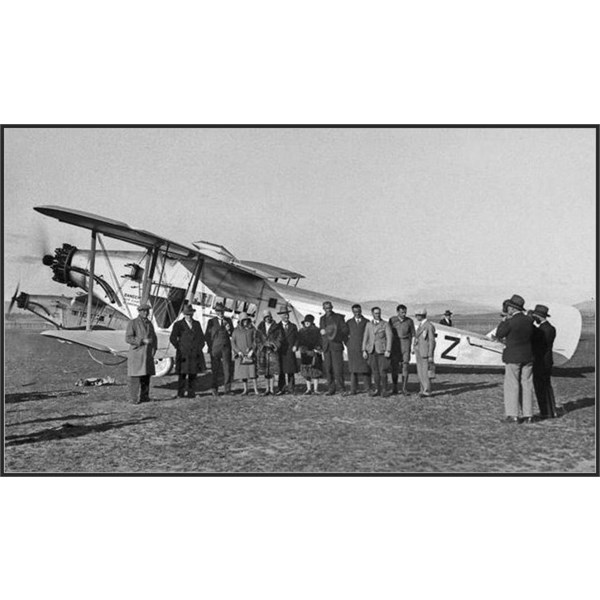
The team, including Frank Neale (fourth from right) and Donald Mackay (fifth from right) poses before VH-UEZ Diamond Bird in Canberra
In 1928 the two remaining aircraft were withdrawn from service. Both aircraft were rebuilt as 11-seaters (2 pilots plus nine passengers, or the equivalent weight of fuel and cargo) with a lengthened fuselage and a more powerful 485 hp Armstrong Siddeley Jaguar 14-cylinder engine. The re-engined aircraft had an operating range of about 700 kilometres at 140 kph.
The converted aircraft were known as the Lasco Lascowl. Both aircraft, still retaining their original names Diamond Bird and Love Bird, were chartered by an aerial survey expedition led by Australian explorer Donald Mackay. The expedition set off 23 May 1930 to carry out a 67,000-square-mile (170,000 km2) survey of central Australia. Both aircraft returned to
Melbourne in July 1930 without a mishap each having flown more than 300 hours.
On Tuesday 17th June 1930 Captain Frank Neale was at the controls of a large ANEC III bi-plane called Love Bird as it bumped to a stop on a patch of sand and scrub not far from Uluru and he became the first person to land an aircraft near the spectacular Ayres
Rock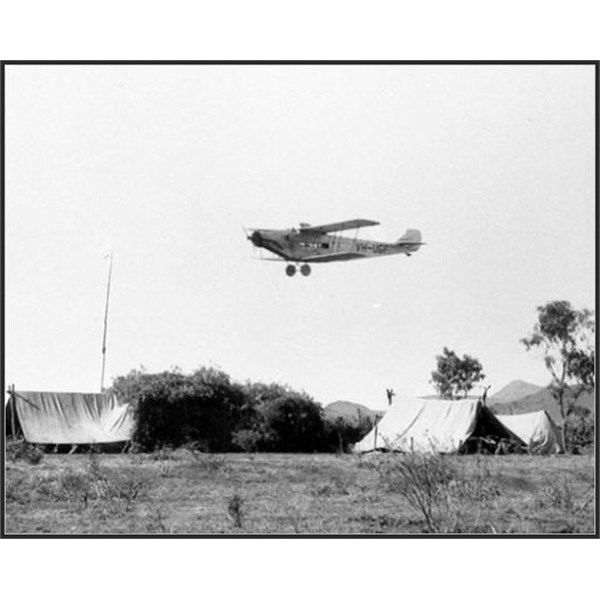
UH-UGF Love Bird flies over camp at Ilbpilla.
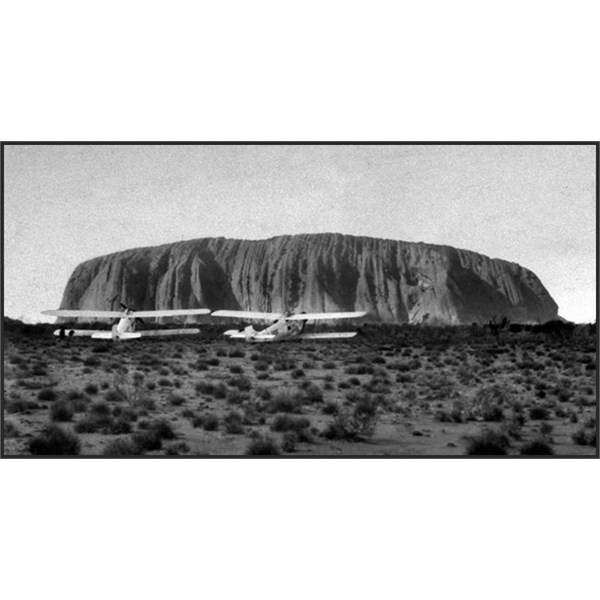
Love Bird and Diamond Bird at Ayres Rock
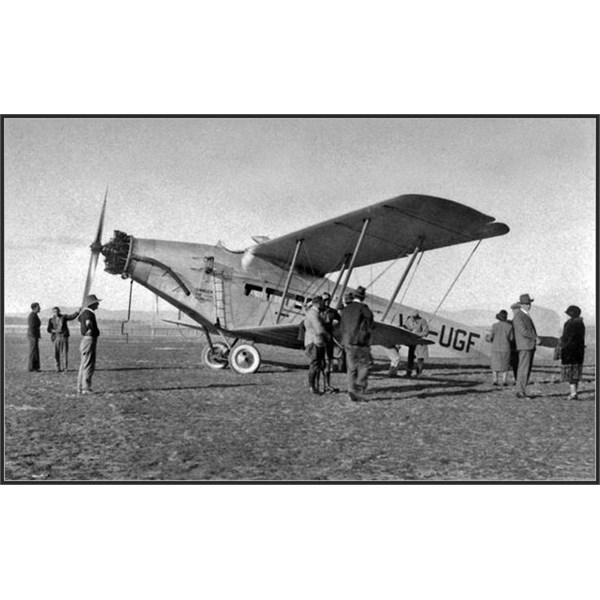
Love Bird in Canberra
Frank Neale’s aircraft, Love Bird (VH-UGF), was one of two that had been hired by entrepreneur Donald Mackay to survey a huge tract of unknown desert country north-west of
Alice Springs. But what was Donald Mackay really doing here? Why was he spending his own money surveying the
Great Sandy Desert for Australia’s Department of Works? Was he hoping to find the fabulous gold reef that lured Lewis Lasseter to his death in the
Petermann Ranges? Or was it just public-spirited altruism? Donald Mackay found no gold — only huge areas of red sand and a dry salt-lake which bears his name today.
The two aircraft were then used on a service between
Melbourne and
Sydney. Love Bird crashed on 14 July 1931 at Temora and was destroyed in the fire which resulted. The last aircraft Diamond Bird was retired in June 1932 and later scrapped.
.